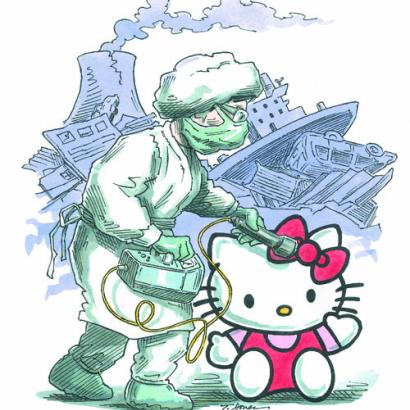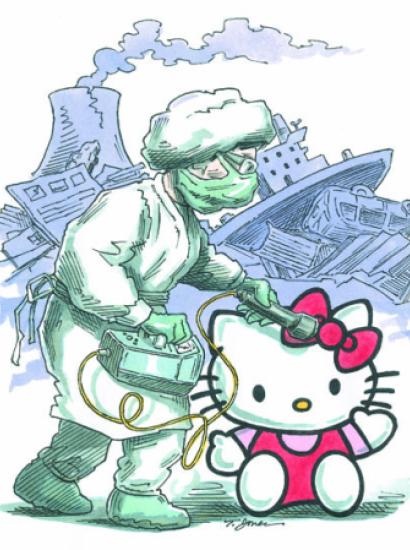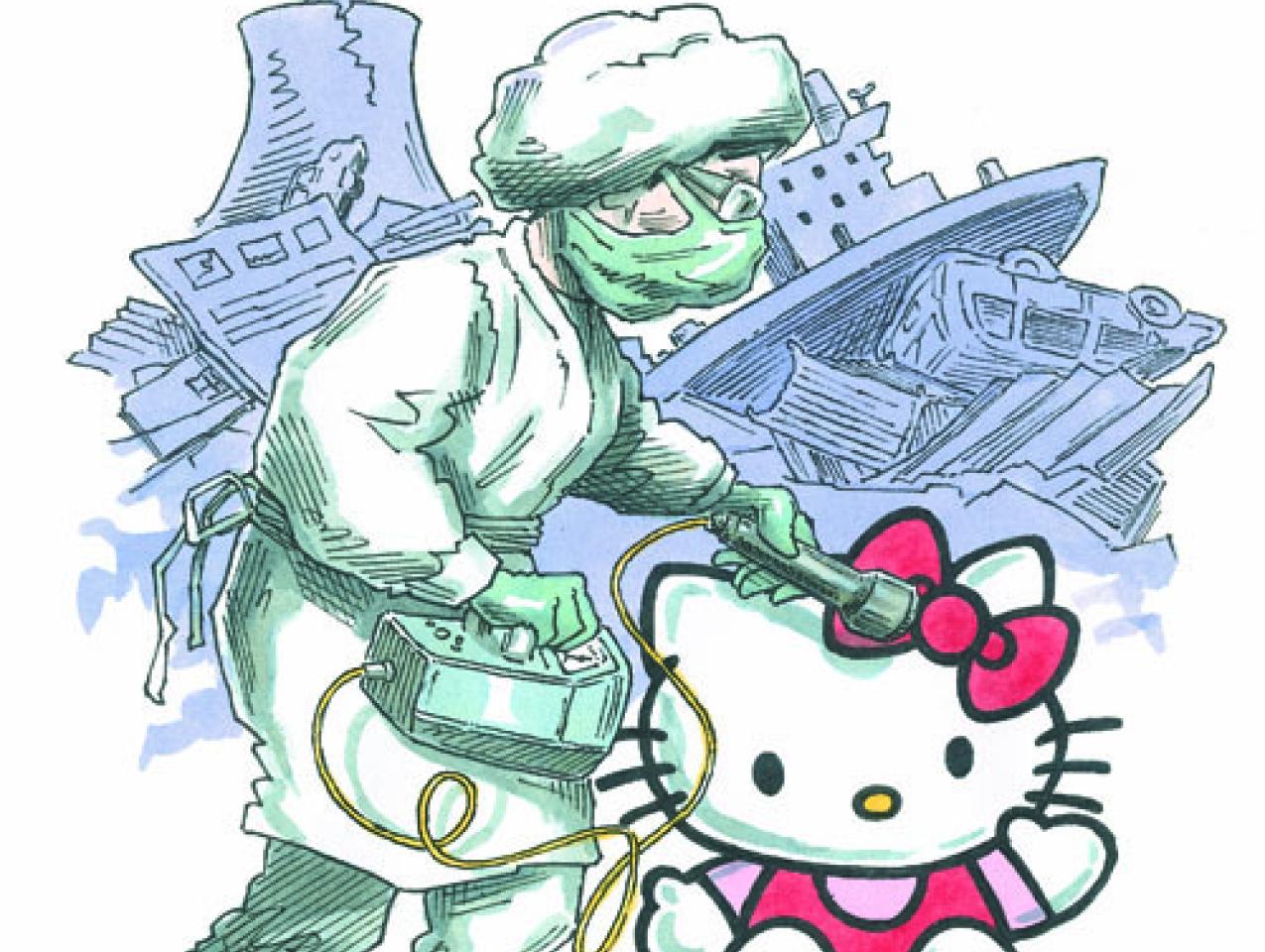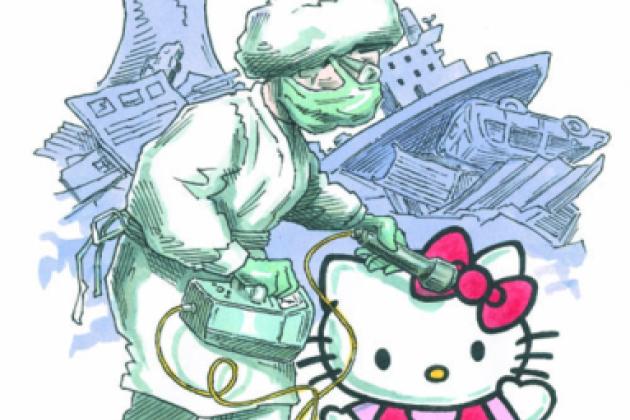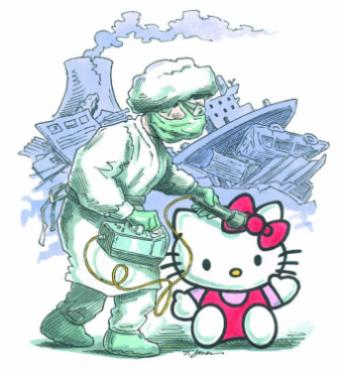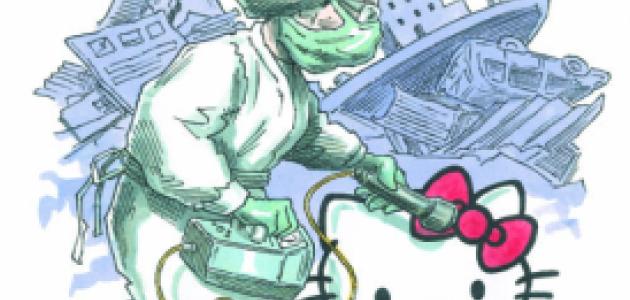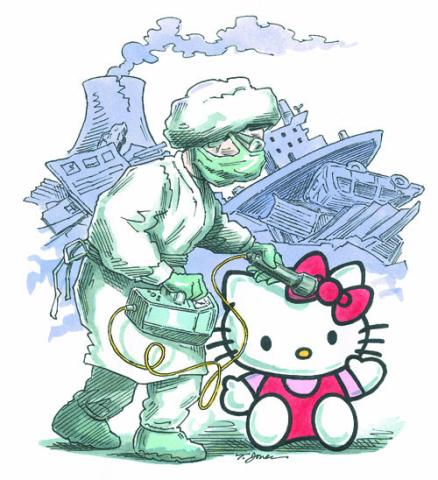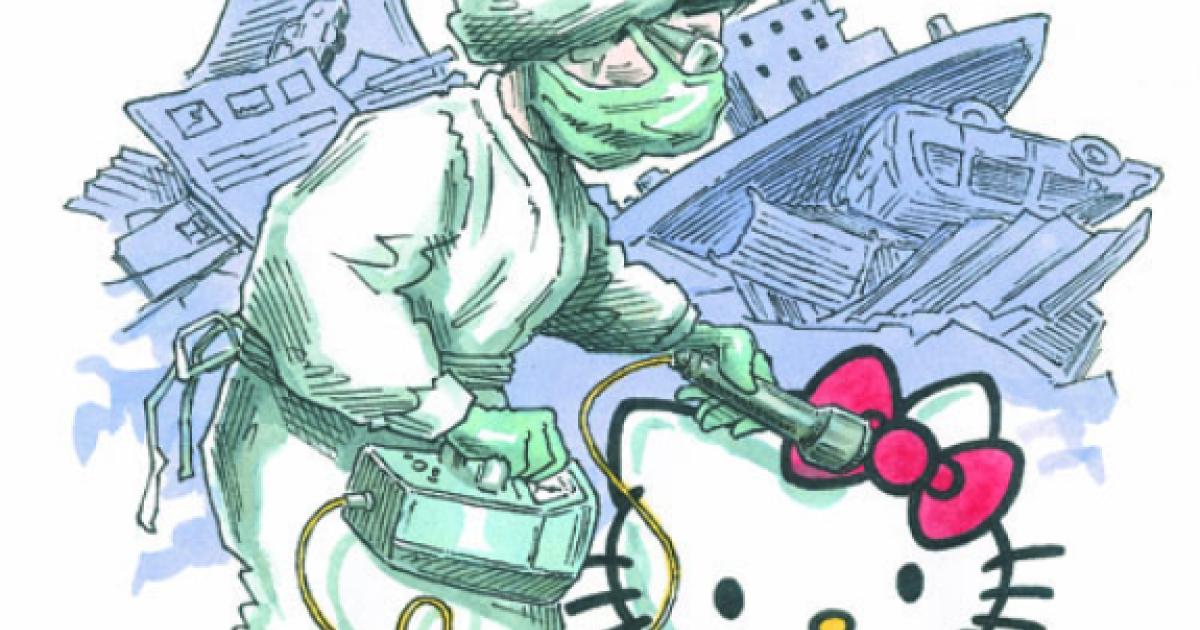- Budget & Spending
- Energy & Environment
- Law & Policy
- Civil Rights & Race
- Health Care
- Economics
For more than a year, I have been hoping that the Japanese government and the Tokyo Electric Power Company would find the courage to bear the unbearable and repair the breathtaking damage from last spring’s earthquake and tsunami. But a better tomorrow is not in sight. A deathly silence still pervades the desolate landscape of Fukushima and the long coastal line of northern Japan—the cesium road.
The Japanese government grows more incompetent and dysfunctional, while Tokyo Electric has dug a deep foxhole of self-preservation and clings tightly to its monopoly. I am embarrassed as a Japanese citizen to list some of the most glaring shenanigans that the government and the power company have been acting out in public over the past year:
- 1. Governmental study committees were supposed to investigate why Tokyo Electric failed to minimize the damage, but the “open” hearings were suddenly closed. The entrenched bureaucracy, as if fed by perpetual radioactivity, continues to grow while failing to disclose any new findings.
- 2. Prime Minister Yoshihiko Noda, the sixth premier in the past five years, along with his cabinet and the largest opposition party, have agreed to raise the consumption tax from the current 5 percent to 10 percent. Apparently even that is not enough to cover the disaster damage. The government is talking about raising it to 17 percent within a year or so. When Japan achieved its famous “miracle,” its great postwar economic renaissance, there was no consumption tax.
- 3. Only five of Japan’s fifty-four nuclear reactors are still operating. People were urged during last summer’s extraordinary heat to use less electricity to prevent outages, having been convinced (falsely) that Japan had no excess power capacity. Patriotic citizens complied, enduring days and nights of acute discomfort. But because everyone used less electricity, Tokyo Electric and its subsidiaries made less money. The government, which favors Tokyo Electric, approved rate hikes of 15 percent for an ordinary household and 35 percent for large stores and industry.
- 4. Few in the mass media, in Japan or abroad, talk about Japan’s biggest nuclear secret: Monju. Named after a Buddhist saint of wisdom, Monju, Japan’s first fast-breeder reactor, squats right on a fault line. Its stated goal is to recycle the nation’s fifteen thousand tons of spent fuel and supply endless energy. But despite swallowing $15 billion of our tax money for its construction, which began on January 5, 1983, Monju has never produced any usable energy, not even for a day. It stands north of our most beautiful ancient city of Kyoto and on the shore of the Sea of Japan. Plutonium, I hear, is lethal for more than twenty thousand years. Nuclear energy is like fire, a good servant but a bad master.
- 5. Japan’s government, like its U.S. counterpart, continues raising the debt ceiling to astronomical levels. It has shown absolutely no interest in reducing the number of well-paid government employees (Japan’s only growth industry), even during the past two “lost decades,” or reducing the crowd of representatives and senators (the island nation, smaller than California, has 722 senators and representatives in the Diet for its 125 million people, compared to 535 Congress members for a U.S. population of 307 million). The 2011 catastrophe has provided only another excuse to expand government-sponsored rescue measures and justify more hiring.
- 6. Dysfunctional or corrupt actions by the government are, at last, being exposed by some muckraking in the mass media.
- News leaks have shown how Toshiba, which built the ruined Fukushima Daiichi reactors, had submitted to then–prime minister Naoto Kan one month after the nuclear disaster a worst-case scenario. Kan decided to keep it “ultra top secret” and let only four confidants view it. If the Japanese people were to read it, he feared, Tokyo would be instantly emptied. Is this the real reason the government and Tokyo Electric kept admonishing Japanese not to panic?
- The media have also been following the water—in this case, the seawater that brave firefighters and Self-Defense troops poured in immeasurable quantities onto the burning reactors. Where did all that water, contaminated by plutonium, disappear to? Into the Pacific Ocean or the ground, of course. But the truth about the contamination has been hard to find. Meanwhile, radioactive water leaks have been reported inside the ruined Fukushima complex as recently as February 2012.
- The Asahi Shimbun, Japan’s premier daily, published in January the names of prominent politicians who have been regularly receiving “money donations” from Tokyo Electric. Former prime minister Taro Aso and some current members of Prime Minister Noda’s cabinet were on the list. The intimacy between the government and the nuclear industry was again laid bare.
- 7. The earthquake and tsunami destroyed one small town after another, one fishing village after another. Those who survived and were old had nowhere to go. The government built “refugee cottages” for those who had lost everything. These were built in remote mountainous regions, supposedly for safety. Many of those who had no choice but to relocate died of despair. Some committed suicide, abandoned on the lush green archipelago where residents are expected to live longer than anywhere else in the world.
-
FALSE REASSURANCE
Is the Japanese government lying to us? Yes. Perhaps it violates good manners to say so, but good manners should no longer be expected from ordinary Japanese who have been inhaling highly radioactive dust and vapor since March 11, 2011. But we continue to behave. I assume it is a matter of pride that each of us refuses to be selfish in a crisis.
Cesium, a new word in our daily vocabulary, began showing up in dangerous concentrations in our national beverage, green tea. Green tea is supposed to be good for our health, perhaps a secret ingredient of that celebrated Japanese longevity. Japan’s largest tea farm happens to be in Shizuoka, about two hundred miles south of Fukushima. Soon after high levels of radioactivity showed up in tea, radioactive elements began invading our dairy products, poultry, pigs, cattle, vegetables, fruit, and mother’s milk. They cast their cloud over seafood caught off Fukushima, in one of the world’s richest fishing zones. Who can comprehend the apparent and hidden magnitude of radioactive contamination that threatens never to end?
Japanese were often admonished, with little subtlety, to avoid panicking about the radioactive danger.Expert reassurances abounded. As soon as the disaster hit Fukushima and for months after, one scientist after another from famous universities and government agencies appeared on nightly news programs, intoning with an air of superior knowledge that radioactive dust and vapor in the air or fish or rice failed to pose “an immediate health risk.” We, unschooled in the fields of radioactivity or medicine, wondered, if not immediately, then when? Will we have cancer?
The experts lectured us that our intense anxiety and aversion about all things radioactive were groundless. They even implied, with little subtlety, that our deepening fear resembled herd thinking, a panic attack. Were they paid to say that the lethal leak was actually a small amount when it was the largest in the world? Or that the accident could be controlled with available safety procedures when the reactors still lie in ruins and no one can account for the deadly water and steam?
Those scholars and experts do not appear on national TV anymore. No one wonders why.
But when the experts disappeared, Tokyo Electric Power Company appeared, acknowledging on television that a reactor meltdown had indeed occurred within the first few hours of the quake and tsunami. This admission of a triple meltdown popped up two months after the accident, during which time Tokyo Electric had obstinately refused to admit to any such thing. The confession came too late for those people who had stayed but a little distance away from the reactors and were unknowingly rained upon by radioactive dust and vapor day after day. Tens of thousands of children lived nearby.
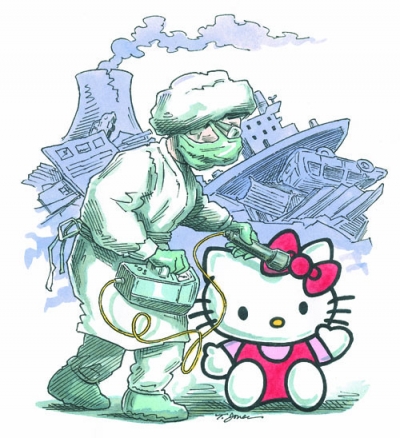
The prime minister’s top aide said on television that Tokyo Electric had not kept the cabinet informed during the first two months and that it was shocked, very shocked. We too were shocked—at the incompetence and arrogance.
AN END TO A SEDUCTIVE MYTHOLOGY
We realize now that the government and the power executives think we are not intelligent enough to understand the technical jargon about nuclear power. Of course, we were not familiar with those esoteric terms when the disaster struck. But we do understand we are facing a nuclear winter on this beautiful archipelago, placed on the Ring of Fire, and may not live long enough even to see such a winter.
Historically, and to this day, we have respected authority (the government) and faithfully observed our laws and regulations to the point of overdoing it. We don’t riot. We don’t loot. We don’t kill. We are taught in our schools and families that the central government, composed of our best and brightest, strives hard every day to guide our nation to safety, prosperity, and fulfillment.
We understand we are facing a nuclear winter, and may not live long enough even to see such a winter.Are the best and brightest betraying us now? Is Japan’s postwar democracy failing us at the moment when we most need its collective wisdom? Our government seems neither willing nor able to reciprocate our loyalty, or foster the courage and resilience we need to recover from the disaster. Worse, we fear that what our government wants is a leap of faith and a blind eye toward its glaring incompetence. Political parties continue squabbling for power and exploiting our worst postwar disaster, which continues degenerating beyond anyone’s ability to stop it. Government bureaucrats who regulate the nuclear industry retire and then find new, higher-paying jobs working for the industry they used to monitor. Officials are still looking for ways to dispose of hundreds of thousands of tons of rubble, much of it radioactive, a far bigger burden than can be disposed of in the disaster area itself.
Japan may have buried its twenty thousand dead—at least those who did not vanish under the debris or the waves—but thousands of people continue to await the return of their livelihoods, lost amid the wreckage and the nuclear nightmare. They hope for the day when they might go back to their homes and work to rebuild their lives. Most do not know, and have not been informed by the government or Tokyo Electric, that they can never return to the hometowns where contamination will remain lethal far beyond their life spans.
The power company and the government, joined at the hip, lecture Japanese that we have received the benefit of nuclear power generation and, because of such power, we enjoyed postwar prosperity. Hence we should not complain. Did ordinary people have any choice in deciding that Japan would develop nuclear power? No, other than the residents of small, remote communities on the shoreline who were wooed by promises of huge tax benefits, jobs for local people, and new infrastructure such as bridges, roads, swimming pools, auditoriums, and gyms. They had little choice but to accept.
The government and Tokyo Electric together constructed a most seductive mythology that nuclear power is safe, cheap, and clean. To maintain that facade, they hid numerous nuclear accidents or underplayed their health hazards.
Since bombs fell on Hiroshima and Nagasaki, Japan has cultivated a religion that condemns nuclear arms. Along the way, however, Japan metamorphosed into a strange creature that felt immune to things nuclear. Few Japanese left the country within the first weeks after the Fukushima meltdown. We can remain calm even in the midst of a horrible reality. Meanwhile, the falsehood of safe, cheap, and forever clean energy is swept away like the receding sea.








